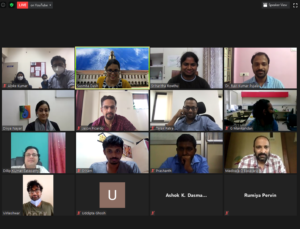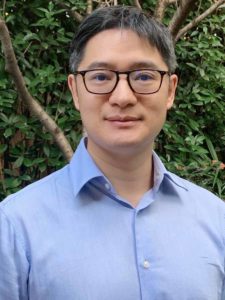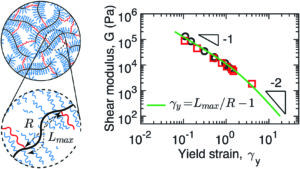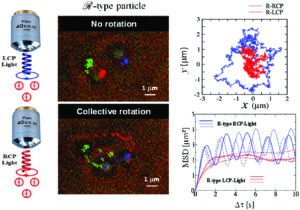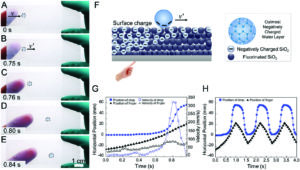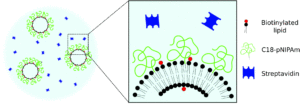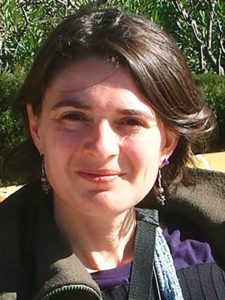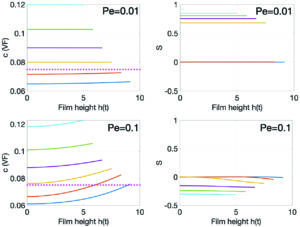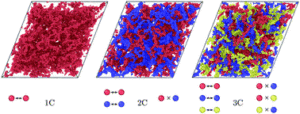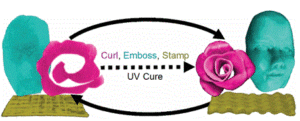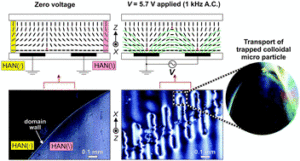
Do you know an early-career researcher who deserves recognition for their contribution to the soft matter field?
Now is your chance to put them forward for the accolade they deserve!
Soft Matter is pleased to announce that nominations are now being accepted for its 2021 Lectureship award. This annual award was established in 2009 to honour an early-stage career scientist who has made a significant contribution to the soft matter field.
The recipient of the award will be asked to present a lecture at an international conference in 2021, where they will also be presented with the award. The Soft Matter Editorial Office will provide £1000 financial support to the recipient for travel and accommodation costs.
The recipient will also be asked to contribute a research article to the journal and will have their work showcased free of charge on the front cover of the issue in which their article is published. The article would be subject to the normal peer review standards of the journal.
Previous winners
2020 – Valeria Garbin, Delft University of Technology, Netherlands
2019 – Timothy J White, University of Colorado, USA
2018 – Susan Perkin, University of Oxford, UK
2017 – Daeyeon Lee, University of Pennsylvania, USA
2016 – Damien Baigl, Ecole Normale Supérieure, Paris, France
2015 – Lucio Isa, ETH Zürich, Switzerland
2014 – Eric Dufresne, Yale University, USA
2013 – Eric Furst, University of Delaware, USA
2012 – Patrick Doyle, MIT, USA
2011 – Michael J. Solomon, University of Michigan, USA
2010 – Bartosz Grzybowski, UNIST, Republic of Korea
2009 – Emanuela Zaccarelli, University of Rome, Italy
Eligibility
To be eligible for the lectureship, candidates should meet the following criteria:
- Be an independent researcher, having completed PhD and postdoctoral studies
- Be actively pursuing research within the soft matter field, and have made a significant contribution to the field
- Be at an early stage of their independent career (this should be within 12 years of attaining their doctorate or equivalent degree, but appropriate consideration will be given to those who have taken a career break or followed an alternative study path)
Although the Soft Matter Lectureship doesn’t explicitly reward support of or contributions to the journal, candidates with a history of publishing or reviewing for the journal would be more likely to be considered favourably.
Selection
- All eligible nominated candidates will be assessed by a shortlisting panel, made up of members of the Soft Matter Advisory Board and a previous lectureship winner.
- The shortlisting panel will consider the nomination form and letter of recommendation, as well as the three recent research articles highlighted in the nomination form for consideration.
- Shortlisted candidates will be further assessed by the Soft Matter Editorial Board, and a winner will be selected based on an anonymous poll.
- Selection is not based simply on quantitative measures. Consideration will be given to all information provided in the letter of recommendation and nomination form, including research achievements and originality, contributions to the soft matter community, innovation, collaborations and teamwork, publication history, and engagement with Soft Matter.
Nominations
Nominations must be made via email to softmatter-rsc@rsc.org, and include the following:
- A brief letter of recommendation (1 page maximum length)
- A complete nomination form (includes list of the candidate’s relevant publications or recent work, 3 research articles to be considered during the shortlisting process, candidate’s scientific CV, and full contact details)
Please note:
- Nominations from students and self-nomination is not permitted.
- The nominee must be aware that he/she has been nominated for this lectureship.
- As part of the Royal Society of Chemistry, we have a responsibility to promote inclusivity and accessibility in order to improve diversity. Where possible, we encourage each nominator to consider nominating candidates of all genders, races, and backgrounds. Please see the RSC’s approach to Inclusion and Diversity.
- Candidates outside of the stated eligibility criteria may still be considered.
Nominations deadline: 30th November 2020
Download nomination form here
Comments Off on Open for Nominations: 2021 Soft Matter Lectureship


